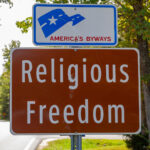The Signing of the Peace Accords is a yearly commemorative event held on January 12 — the day the Chapultepec Peace Accords were signed in El Salvador in 1992, bringing an end to a decades-long Civil War. After being ravaged by the Salvadoran government and their opposition for more than 12 years, Salvadorans finally had a measure of peace with the signing of these agreements. With this, all sides mutually agreed on a ceasefire that was not officially broken for many years, allowing the country to rebuild and re-emerge from the ashes of war.
History of Signing of the Peace Accords
The year was 1979, when leftist and moderate Salvadorans had just overthrown their president, Carlos Humberto Romero, after class-based and economic inequalities were unaddressed and any protest was met with harsh reprisal by the government. And so, El Salvador was plunged into a civil war that lasted 12 years, killed between 70,000 and 80,000 people, and displaced more than one million people.The power vacuum in the government allowed the rise of multiple left-wing military groups, many of whom joined together to create the Farabundo Martí National Liberation Front (F.M.L.N.), a prominent opposition force to the Salvadoran government. Five years in, the country was struggling under the weight of constant violence and fighting. Multiple attempts were made to establish peace and end the war, but they were only fruitful in 1991, almost 11 years after the war began. The truce took effect a year later and was signed by the F.M.L.N., representatives of the Salvadoran government, and other political parties and was mediated by a special representative of the U.N. Secretary-General, Álvaro de Soto. The armed forces now had more oversight, there was a newly appointed civilian police force, the F.M.L.N. got legal political status, and all warring parties got amnesty against war-time actions.Since then, El Salvador has made strides in bringing the country back from the brink of destruction. While they still have a long way to go, Salvadorans possess the strength and foundation of a hard-won peace process to guide them.
Signing of the Peace Accords timeline
On October 15, a U.S.-backed coup d'état helps right-leaning rebels overthrow the sitting Salvadoran president Carlos Humberto Romero.
On January 20, while the previous government shows little to no interest in the affairs of El Salvador, Reagan's appointment changes it all — the U.S. government now plays a bigger role in Salvadoran politics.
In March, Archbishop Oscar Arnulfo Romero, a vehement critic of the Salvadoran military, is assassinated while saying Mass, further highlighting the precarious predicament of the Salvadoran people.
On January 16, the final agreement to end the Salvadoran Civil War is signed at Chapultepec Castle, Mexico City.
The then-Secretary-General of the U.N. Boutros Boutros-Ghali ends the peace process in El Salvador.
The appointment of businessman Nayib Bukele as president of El Salvador ends the three-decade-long two-party dominance held by the right-wing “Nationalist Republican Alliance” and the leftist F.M.L.N.
Signing of the Peace Accords FAQs
Is El Salvador peaceful?
Post-war El Salvador is no longer only governed by the military and did see an improvement for a period. Unfortunately, weak legal and political institutions have let down Salvadorans, who struggle against corruption, abuse, and gang-related violence.
How was the U.S. involved in El Salvador?
The U.S. considered El Salvador an ally since the Cold War days and influenced the war by providing monetary aid and significant military equipment to the Salvadoran government.
Where is El Salvador?
El Salvador in Central America has the distinction of being the smallest country there and isn’t even the size of Massachusetts. A mountainous country, El Salvador is bordered by the Pacific Ocean, Honduras, and Guatemala.
How to Observe Signing of the Peace Accords
-
Learn what led to the war
Pay tribute to the peace accords by learning about key events leading up to the war. You can even apply lessons learned from El Salvador’s experience to other transitional societies as part of your own little socio-political exercise.
-
Learn about the peace talks
Figure out who the different players were who contributed to the peace accords and what effects their actions have wrought. Check out various sources online for live-action replays and resources on these peace talks.
-
Understand the future
Read up on the present and future socio-political climate in El Salvador. Check out resources that delve into how the foundation laid down by the peace accords now needs to be bolstered by further action and support.
5 Interesting Facts About El Salvador And Salvadorans
-
El Salvador is the land of earthquakes
The country is very susceptible to earthquakes because of its location and other vulnerability factors, and it has had more than 12 major earthquakes over the past century.
-
A monument to peace
Cristo de La Paz Monument, or Monument to Peace, is a 50-foot high sculpture made of bullet casings, brass, and cast bronze, meant to represent the peace accords.
-
The 25th anniversary celebrations
The then-president Salvador Sánchez Cerén marked the 25th anniversary of the Signing of the Peace Accords by inaugurating a Monument to Peace and Reconciliation plaza, which, among other attractions, contains signatures of those who signed the 1992 peace agreements.
-
Salvadorans are mestizo
90% of Salvadorans are a mix of Spanish and Indian descent, and 9% of these claim Spanish ancestry.
-
Salvadorans in the U.S.
As per the latest figures, more than 3 million Salvadorans live in the U.S. and send home money to their families in El Salvador.
Why Signing of the Peace Accords is Important
-
It is a historic event
The signing of the peace accords indicated a transition from years of fighting to a more stable and safer life in El Salvador. The cease-fire initiated a pathway to recovery for the war-ravaged region.
-
It highlights the human rights movement
The decades of human rights abuses suffered by civilians and normal people both before and during the war paved the way for recognizing that the war needed to stop and encouraged peace talks. While the implementation of various human rights recommendations has been slow, there has been an advancement in judicial reform in post-war El Salvador.
-
The peace accords accomplished a lot
The country still has a way to go to achieve true peace, but they have seen better protection of civilian rights since the war ended. Other major accomplishments included the demilitarization of El Salvador's political parties, the end of wartime violence, and the presence of a bigger human rights machinery in the country. El Salvador went from a country where dissidents ran in fear for their lives to a land where opposing political views were openly admitted.
Signing of the Peace Accords dates
| Year | Date | Day |
|---|---|---|
| 2023 | January 16 | Monday |
| 2024 | January 16 | Tuesday |
| 2025 | January 16 | Thursday |
| 2026 | January 16 | Friday |
| 2027 | January 16 | Saturday |



















